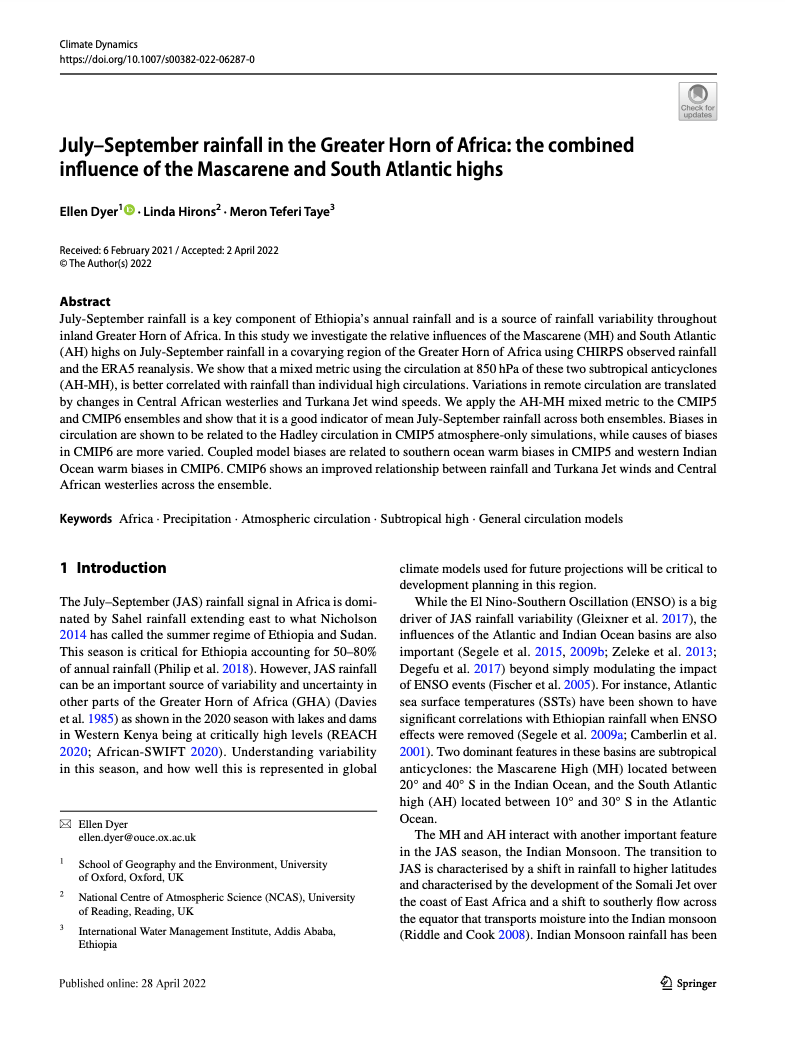Authors: Ellen Dyer, Linda Hirons, & Meron Teferi Taye
July-September rainfall is a key component of Ethiopia’s annual rainfall and is a source of rainfall variability throughout inland Greater Horn of Africa. In this study we investigate the relative influences of the Mascarene (MH) and South Atlantic (AH) highs on July-September rainfall in a covarying region of the Greater Horn of Africa using CHIRPS observed rainfall and the ERA5 reanalysis. We show that a mixed metric using the circulation at 850 hPa of these two subtropical anticyclones (AH-MH), is better correlated with rainfall than individual high circulations. Variations in remote circulation are translated by changes in Central African westerlies and Turkana Jet wind speeds. We apply the AH-MH mixed metric to the CMIP5 and CMIP6 ensembles and show that it is a good indicator of mean July-September rainfall across both ensembles. Biases in circulation are shown to be related to the Hadley circulation in CMIP5 atmosphere-only simulations, while causes of biases in CMIP6 are more varied. Coupled model biases are related to southern ocean warm biases in CMIP5 and western Indian Ocean warm biases in CMIP6. CMIP6 shows an improved relationship between rainfall and Turkana Jet winds and Central African westerlies across the ensemble.

